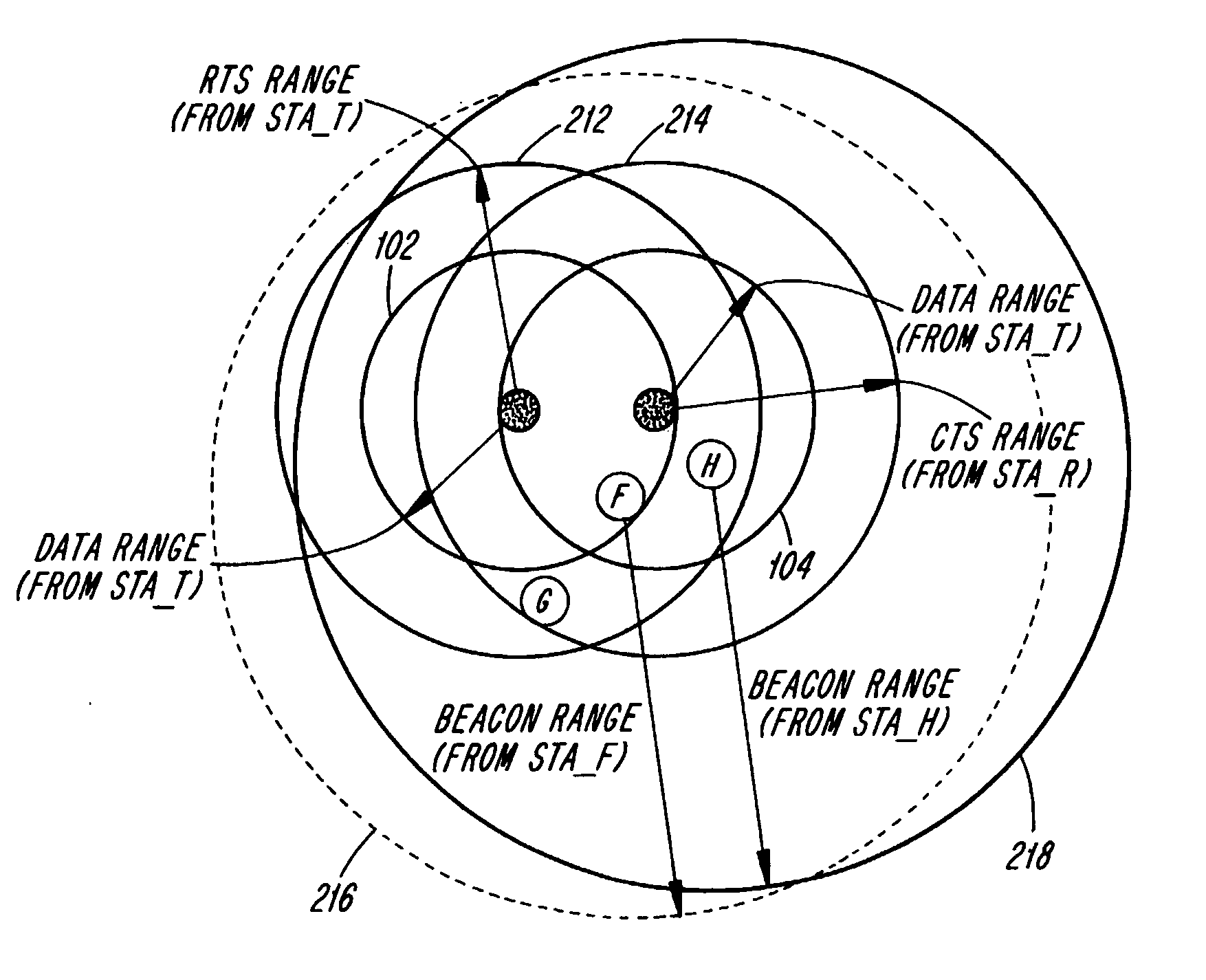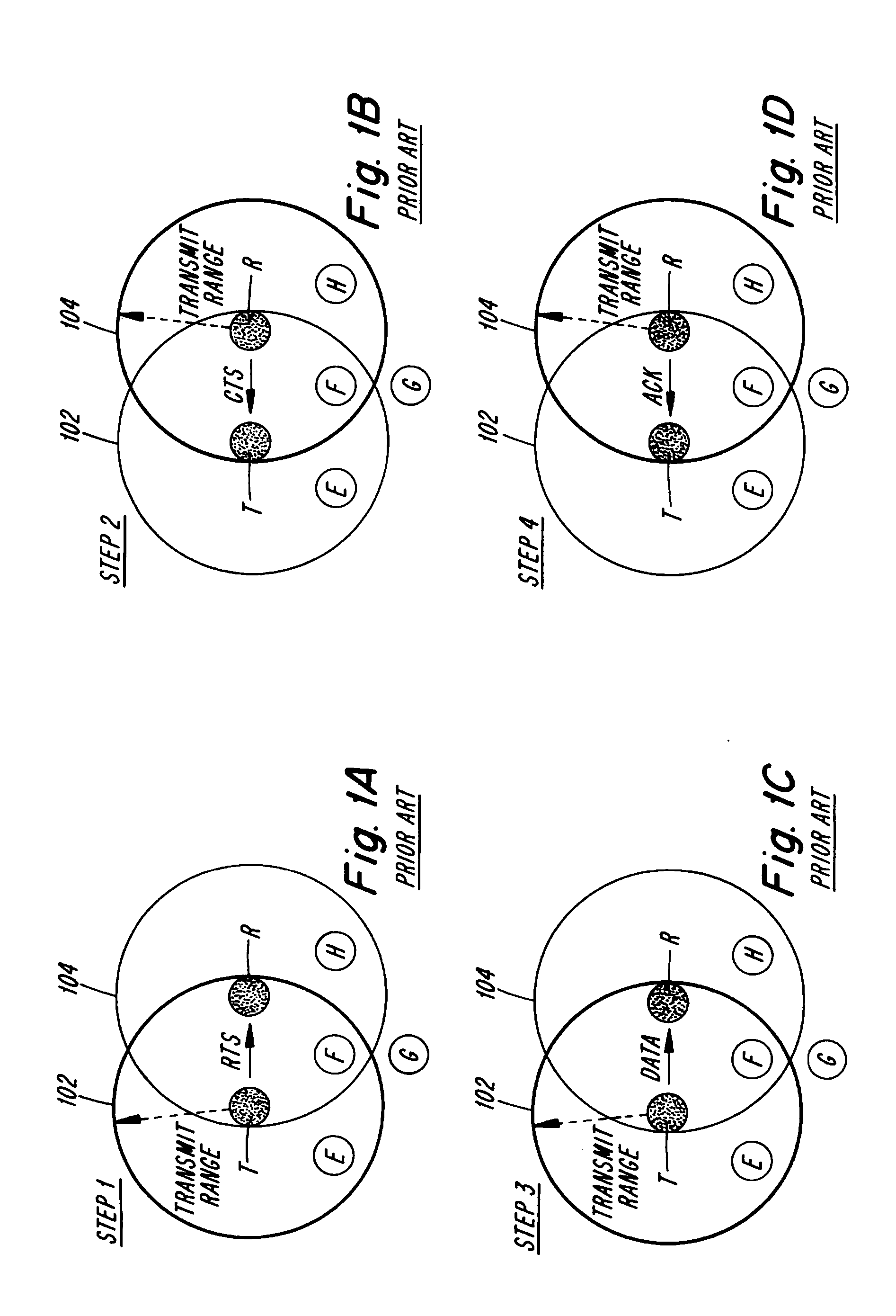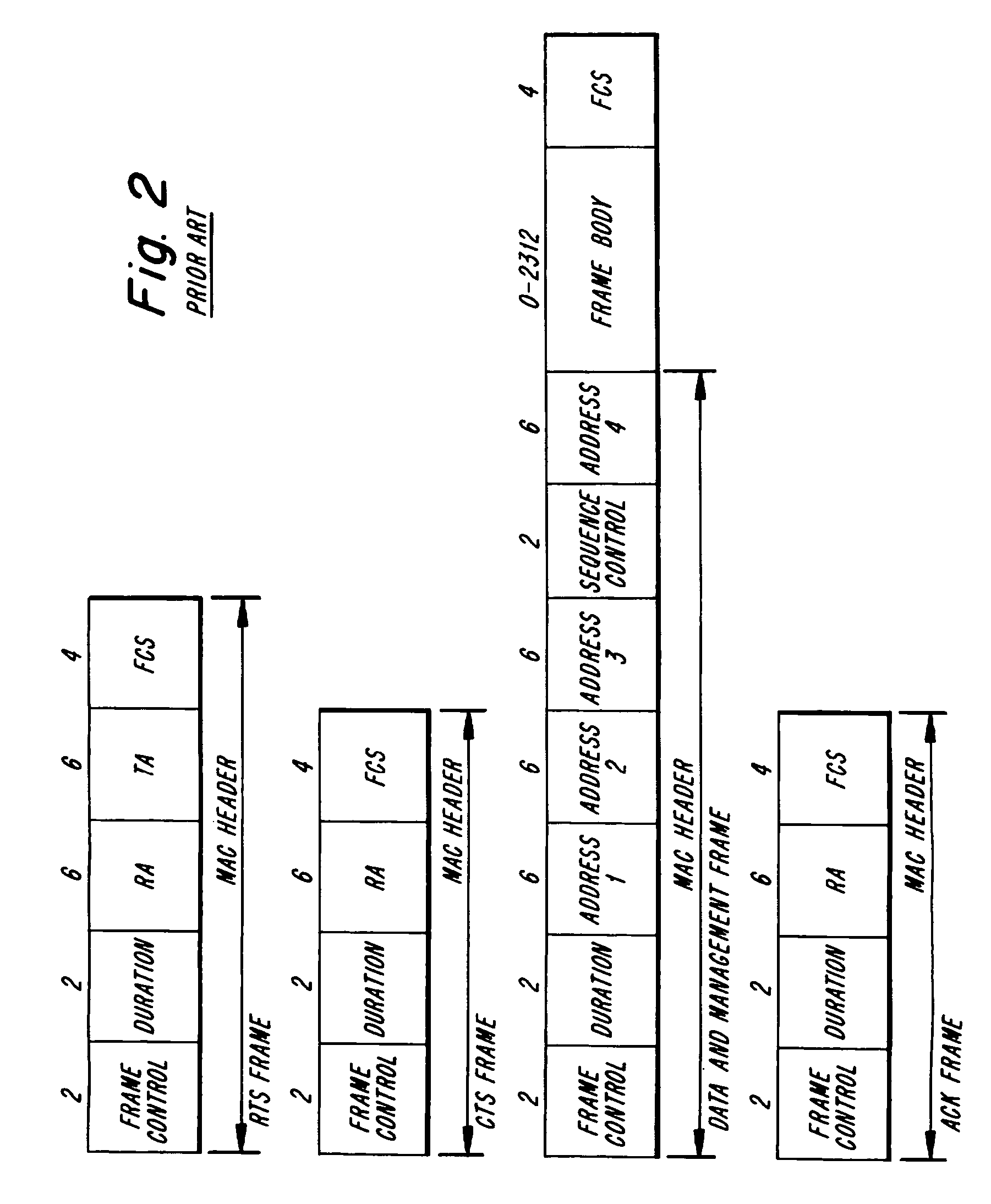Instantaneous joint transmit power control and link adaptation for RTS/CTS based channel access
a power control and transmit power technology, applied in power management, wireless communication, data switching networks, etc., can solve the problems of harmful interference peaks of data reception, unfavorable distribution channel access, and power control not supported in known rts-cts based channel access schemes, etc., to improve the overall system performan
- Summary
- Abstract
- Description
- Claims
- Application Information
AI Technical Summary
Benefits of technology
Problems solved by technology
Method used
Image
Examples
first embodiment
[0067] In Tier 2, relating to RTS, CTS and TPC, two major embodiments or cases exist. In the first embodiment, Fixed TPC, RTS / CTS are sent with the highest possible TP, but are limited by regulatory TP requirements. Hence the TP setting is identical to the Beacon information. The purpose of this embodiment is to be able to inform distant stations of ongoing DATA transmissions such that they can select DATA transmit parameters that will mitigate generation of disturbing interference. Although not supported by 802.11 per se, it should be noted that RTS / CTS frames could, in principle, be sent in a special control channel separated from data transmissions, hence avoiding interfering with said data transmissions.
[0068] In the second embodiment, Group TPC, the RTS and CTS are sent with a sufficiently high TP so as to reach members or stations within the same group / BSS, but preferably with a sufficiently low TP so as to a) not reach members within another group, and b) stay within regulato...
second embodiment
[0071] In a variant of the Tier 2 second embodiment, group based TPC is performed for the CTS message, while applying a lowest possible TP for the RTS frame. This primarily targets the case where the RTS-CTS phase can be housed within a single TS, i.e. not a IEEE 802.11a system. The motivation for this is that DATA reception is more vulnerable than the reception of ACKs, due to the potentially longer interference exposure time for the DATA frame.
[0072] In Tier 3, with respect to DATA, ACK TPC+LA, for DATA transmission an Instantaneous Closed Loop TPC and Instantaneous Closed Loop LA is deployed via feedback information conveyed in the CTS messages. In addition to this, DATA TPC also conforms to regulatory aspects as well as the RTS / CTS TPC setting. TPC and LA (Link Adaptation) for ACK generally follows the parameters for DATA. A special case is fragmented transmission when DATA and ACK headers acts as implicit RTS and CTS messages. Then the DATA, ACK and TPC may optionally become eq...
PUM
 Login to View More
Login to View More Abstract
Description
Claims
Application Information
 Login to View More
Login to View More - R&D
- Intellectual Property
- Life Sciences
- Materials
- Tech Scout
- Unparalleled Data Quality
- Higher Quality Content
- 60% Fewer Hallucinations
Browse by: Latest US Patents, China's latest patents, Technical Efficacy Thesaurus, Application Domain, Technology Topic, Popular Technical Reports.
© 2025 PatSnap. All rights reserved.Legal|Privacy policy|Modern Slavery Act Transparency Statement|Sitemap|About US| Contact US: help@patsnap.com



